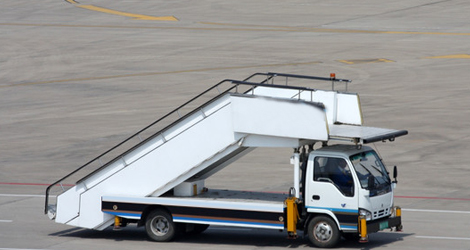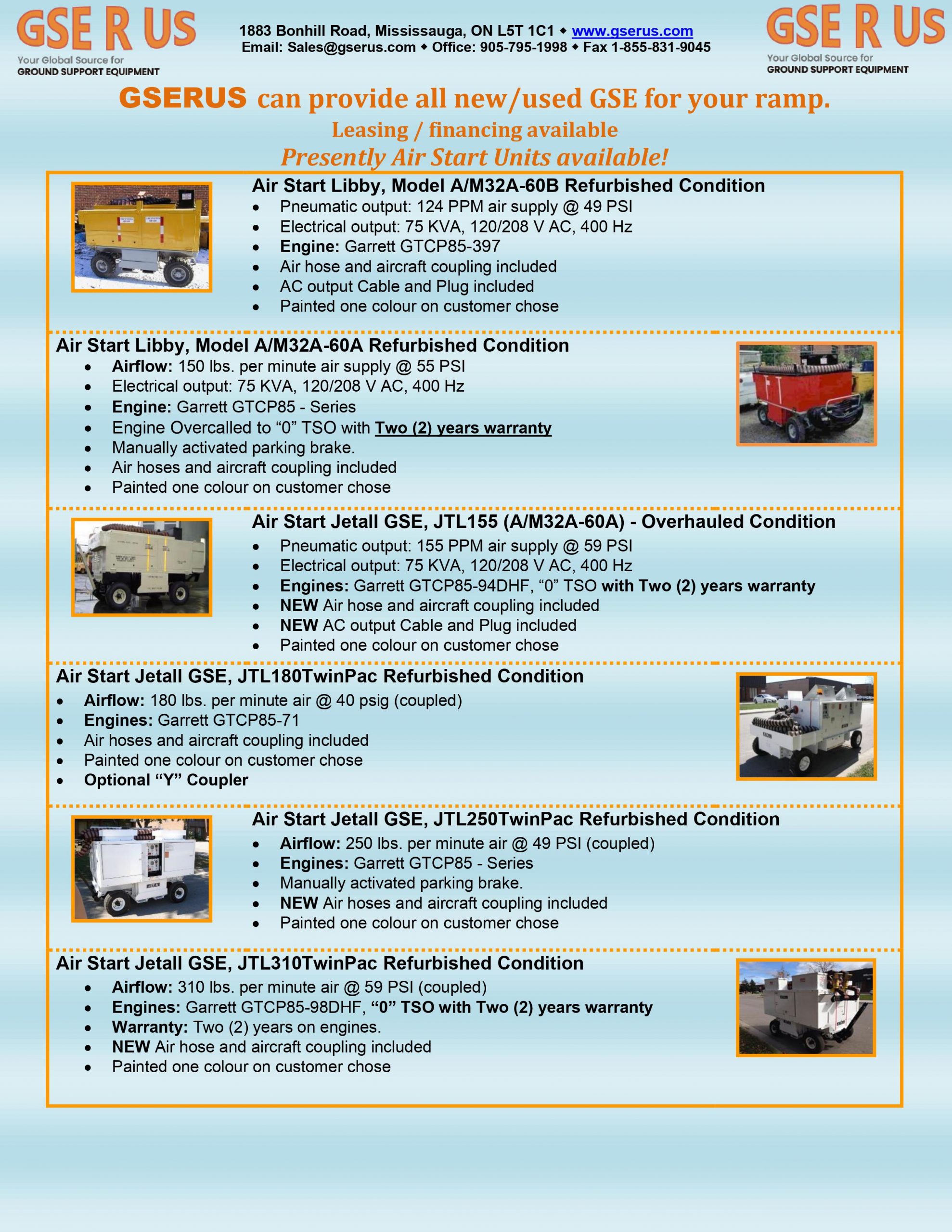 As the aviation industry continues its upward trajectory, the need for streamlined efficiency and advanced Ground Support Equipment (GSE) has remained the same. GSE plays a crucial role in ensuring aircraft’s smooth and safe operations on the ground. In this blog post, we’ll explore the future trends in Ground Support Equipment, envisioning a horizon where GSE-R-US leads innovation and reliability.
As the aviation industry continues its upward trajectory, the need for streamlined efficiency and advanced Ground Support Equipment (GSE) has remained the same. GSE plays a crucial role in ensuring aircraft’s smooth and safe operations on the ground. In this blog post, we’ll explore the future trends in Ground Support Equipment, envisioning a horizon where GSE-R-US leads innovation and reliability.
Smart and Connected GSE: The future of ground support equipment lies in its ability to connect seamlessly with other components of airport operations. Smart GSE, equipped with IoT (Internet of Things) technology, can communicate real-time data, enabling predictive maintenance and optimizing operational efficiency. Imagine a scenario where a baggage loader can anticipate maintenance needs before a breakdown occurs, preventing costly delays and ensuring a smoother passenger experience.
Electric and Sustainable GSE: In line with the global push towards sustainability, the aviation industry is witnessing a shift towards electric and environmentally friendly solutions. Electric GSE reduces carbon emissions and lowers operational costs through decreased fuel consumption and maintenance requirements. GSE-R-US is at the forefront of this eco-friendly revolution, offering a range of electric-powered tugs, baggage tractors, and ground-power units.
Autonomous GSE Operations: The future of ground support equipment is independent. Imagine robotic tugs navigating the tarmac precisely guided by advanced sensors and AI algorithms. Autonomous GSE operations promise increased efficiency, reduced human errors, and enhanced safety. GSE-R-US invests in cutting-edge technology to develop autonomous baggage loaders, fuel trucks, and pushback tugs, revolutionizing ground handling procedures.
Augmented Reality (AR) for Maintenance and Training: AR technology is set to transform GSE maintenance and training procedures. GSE-R-US recognizes the potential of AR in providing technicians with real-time, hands-free access to maintenance procedures and schematics, reducing downtime and improving overall efficiency. Additionally, AR can be employed in training programs, offering immersive and interactive simulations for GSE operators, ensuring a skilled and confident workforce.
Data Analytics for Performance Optimization: The future of GSE is data-driven. GSE-R-US harnesses the power of big data analytics to monitor equipment performance, fuel consumption, and maintenance patterns. Through meticulous analysis of extensive data sets, GSE operators gain valuable insights to refine operations, enhance equipment longevity, and minimize operational expenses. The integration of predictive analytics is instrumental in preemptively identifying issues, enabling a proactive maintenance approach to mitigate potential problems before they escalate.
As GSE-R-US propels into the future, it is clear that the landscape of ground support equipment is evolving rapidly. Integrating innovative technology, sustainability initiatives, autonomy, augmented reality, and data analytics is shaping the next generation of GSE. By staying at the forefront of these trends, GSE-R-US ensures the efficiency and reliability of ground operations and contributes to a greener and more sustainable aviation industry. As we look ahead, the horizon for GSE-R-US is filled with innovation, connectivity, and a commitment to shaping the future of ground support equipment.

 Welcome to GSE-R-US, your trusted source for all things related to Ground Support Equipment (GSE). Today, we’re excited to dive into the dynamic world of GSE innovation. The aviation industry is constantly evolving, and the equipment used to support it on the ground is no exception. In this blog, we’ll explore recent innovations in GSE that are shaping the future of airport operations and sustainability.
Welcome to GSE-R-US, your trusted source for all things related to Ground Support Equipment (GSE). Today, we’re excited to dive into the dynamic world of GSE innovation. The aviation industry is constantly evolving, and the equipment used to support it on the ground is no exception. In this blog, we’ll explore recent innovations in GSE that are shaping the future of airport operations and sustainability.
 About the author: Arie Tall has held positions as an airline pilot, chief pilot, director of flight operations, and airline VP. He is the business owner of an airline, ground handling company and has taken on the latest challenge of designing and manufacturing GPUs under the name Jetall GPU.
About the author: Arie Tall has held positions as an airline pilot, chief pilot, director of flight operations, and airline VP. He is the business owner of an airline, ground handling company and has taken on the latest challenge of designing and manufacturing GPUs under the name Jetall GPU.

